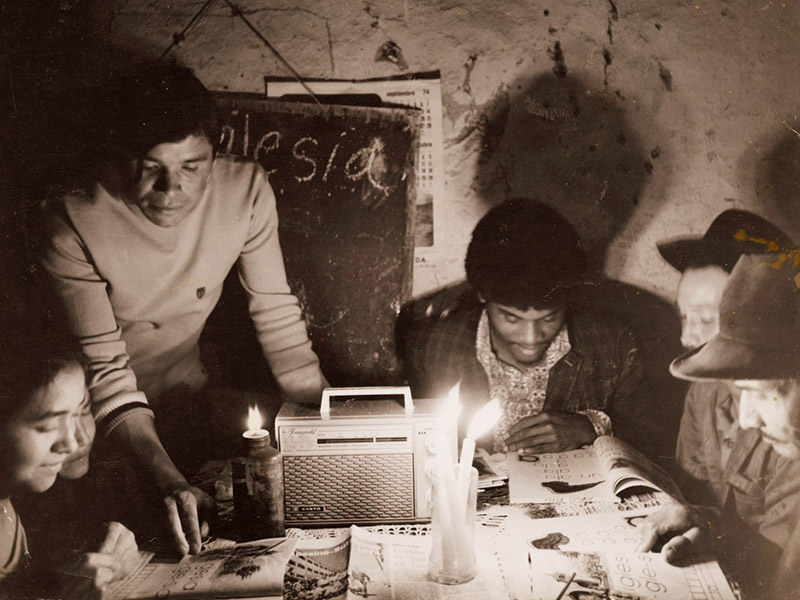The Valley of Tenza was the birthplace of community radio in Colombia. In the late 1940s, as Europe emerged from rubble of World War II, this country remained deeply divided along political lines. Liberals and Conservatives shared power and towns showed their political colors by painting their walls red or blue, respectively.
In this divisive setting, one Catholic priest, Monsignor José Joaquín Salcedo Guarín (1921-1994), was assigned to the parish of Sutatenza in the Valley of Tenza. A witness to growing social disparity between those who lived in the cities and those who worked the countryside, the cleric set out to create a radio network in order to broadcast lessons to those who had no access to formal education. It was a revolutionary way of taking the pulpit to the hills and give the many voiceless, a voice.
Lessons on the radio included maths, reading the alphabet, health and sanitation advice, as well as specific agricultural instruction, which could improve the campesino’s overall quality of life.
Radio Sutatenza was so instrumental in educating farmers that it purchased several transmitters and expanded to include parishes along the Colombian coast. It even ran a free weekly paper: El Campesino.
Father Salcedo’s community-focused media led to the dawn of social-inclusive thinking and the creation of an umbrella organization, the Acción Cultural Popular (ACPO), which worked alongside the state’s entities to set up services and schools in the Colombian countryside.
The National Museum of Colombia, Museo Nacional, presents a temporary exhibition titled: Memories of the rural world: Radio Schools (1947-1988) and which launches April 16th in the capital.
With a 1954-assembled radio and pictures taken during two decades (1950 to 1970), as well as educational booklets developed by Radio Sutatenza, the exhibition seeks to remember the historical context of non-formal education of Colombia’s farmers and how they managed to transcend illiteracy thanks to the free flow of the airwaves.
The exhibition also evokes the perseverance of campesino families in trying to become literate in an age when half the population, almost 9 million, resided in the countryside.
The Radio Schools managed to educate beyond the alphabet, with lessons on how to manage personal hygiene to balance a farmer’s house budget.
Radio Sutatenza existed almost a half century until it was sold off and closed in 1994. It amassed 1.5 million hours of airtime, published 1,635 editions of El Campesino and housed 690,000 vinyls of Discoestudio’s music collection. In 2008, the Luis Ángel Arango Library acquired many of the recordings and documents belonging to Radio Sutatenza.
The exhibition presents testimonies from farmers who inhabited the Valley of Tenza, living day to day and who without the presence of radio-induced education, would have remained excluded from the social fabric.
Memories of the rural world: Radio Schools (1947-1988) presents donations from the Popular Cultural Action Foundation, as well as some of the audio archives which were recognized by UNESCO in 2010 as an indelible part of the world list of Intangible Cultural Heritage.
Museo Nacional
Cra 7 No.28-66
Admission to this exhibition is free.

